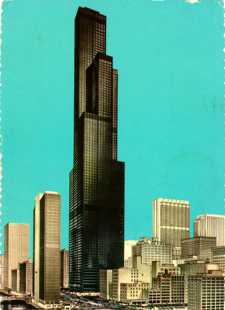

Things got interesting in 1929, when two buildings in New York competed neck and neck to surpass the Woolworth-the Bank of Manhattan and the Chrysler Building. In 1913 the Woolworth Building was completed and would claim the title for the next 17 years. It was surpassed the next year by the Metropolitan Life Insurance Company Tower in New York in 1909. Even in 1905 when the New York Times Building, New York, was completed at 111m (363ft) to the roof with 128m (420ft) including flagpole, it was not considered to be taller than the 119m (391ft) high Park Row Building (also located in New York), which had held the world’s tallest title since 1899.įollowing the Park Row Building, the Singer Building in New York was next to claim the title of “World’s Tallest” in 1908. So, there wasn’t too much to debate when it came to claiming the “World’s Tallest” title. Most of the early skyscraper designs had flat roofs or domes at the top of their structures and were measured from curb to the top of building, with flagpoles generally not included. Next to claim the title was the World Building in New York in 1890, followed by the Manhattan Life Insurance Building in New York in 1894. Being the first skyscraper, it was also the first to claim the title of “World’s Tallest Building” at 55m (180ft). The first skyscraper (acknowledged because of its use of a curtain wall construction on a steel frame) is generally accepted as the 1885 Home Insurance Building by architect William Le Baron Jenney in Chicago. Of course skyscrapers had been in existence for almost 80 years before the Joint Committee on Tall Buildings (as the Council was first known) formed in 1969. Its official Height Committee was formed in 1993, but the function of determining height, data and “tallest” titles pre-dates this, with the creation of the first official “CTBUH 100 Tallest Buildings in the World” list first appearing in the 80’s and which is now published in numerous reference books and periodicals each year. Protesters of the name change started a Web site, boasting 34,000 signatures on an online petition.It maintains three definitions for measuring tall building height along with numerous definitions pertaining to tall building height, function, materiality, etc. “Even with a very long, integrated marketing campaign we could be looking at a 20- to 30-year period.” “Gaining public acceptance of renaming the Sears Tower will be extremely challenging,” he added. “We see it on our TVs, in movies and magazines, so it is part of pop culture.” “The Sears Tower is not just a Chicago landmark, it’s a national landmark that’s known around the world,” said Aaron Perlut, a managing partner at St.

Public relations experts, academics and local historians said it could take decades for the new name of the 110-story skyscraper to take its place in the public consciousness. On Thursday, the 36-year-old Sears Tower becomes the Willis Tower, named after the world's third-largest insurance broker, Willis Group Holdings Ltd WSH.N. It may take a bit longer for the public to take to its new name. CHICAGO, July 16 (Reuters) - It took two years to erect what was once the tallest building in the world.


 0 kommentar(er)
0 kommentar(er)
